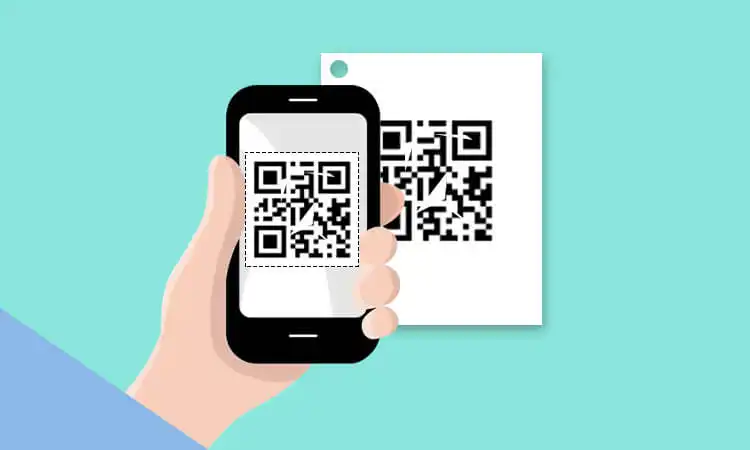QR codes are everywhere, from billboards to product packaging. They offer a convenient way to direct users to digital content with a scan. But how can you track the performance of your QR code campaigns and optimize them for better results? The answer lies in Google Analytics. By setting up tracking for your QR codes, you can collect data on clicks, conversions, and other metrics. You can use this information to refine your campaigns for maximum impact. In this article, we’ll explore how to track QR codes with google analytics and share tips for analyzing the data and improving your campaigns.
What is Google Analytics, and How does It Work?
Google Analytics is a free digital software offered by Google that helps website owners track and analyze visitor behavior on their sites. To use Google Analytics, you must include a block of JavaScript code on your website pages. When a user lands on your website and views a page, the JavaScript code references a JavaScript file. This file executes the Google Analytics tracking operation.
Google Analytics uses a tracking operation to collect data about the page request, including information about the user’s behavior, preferences, and needs. This data is collected through various means and points and is sent to the Analytics server via a list of parameters attached to a single-pixel image request. This allows Google Analytics to analyze the data and give businesses valuable insights into their website visitors and marketing efforts.
Analyzing this data lets you gain insights into your audience’s behavior, preferences, and needs. This, in turn, can help you make informed decisions about improving your website, increasing engagement, and driving conversions.
It’s worth noting that website configurations and reporting needs can differ, so it’s important to understand the overall tracking process to ensure that your reports deliver the accurate data you expect. With this understanding, you can configure Analytics tracking to best suit your site and get the most value from the data it provides.
If you’re also using a QR code generator with analytics, integrating it with Google Analytics can provide you with a more comprehensive report that includes all the relevant data in one place. This can help you make more informed decisions about your marketing strategies and improve your conversion rates.
Why Integrate QR Code Generator with Google Analytics?
Integrating a QR code generator with Google Analytics can help you gain valuable insights into your marketing campaigns and website visitors. Using Google Analytics, businesses can analyze in-depth information about their website visitors, including their behavior, preferences, and needs.
As a marketer, you may wonder how long a QR code lasts when it comes to tracking data. The answer is that a dynamic QR code is valid as long as you have an active subscription. Maintaining a subscription can benefit marketing campaigns in the long run, as it provides valuable statistics that can help you understand and improve your marketing efforts.
In today’s digital age, having an online presence through a website is essential for businesses. It’s important to understand your website’s inner structure and system to see whether it’s accomplishing its purpose. By analyzing what people see and do when they visit your website and studying your visitors’ behavior, you can deliver better results and improve your website’s performance.
By branding QR codes in your products and services and using reliable QR code tracking for Google Analytics, you can see the scans of your QR codes and your users’ behavior in one view. This can provide valuable insights into your marketing campaigns’ success and help you make informed decisions about how to improve your strategies and drive conversions. With this understanding, you can formulate a successful marketing strategy for your business and gain a competitive edge in today’s marketplace.
How to Track QR Codes with Google Analytics?

Tracking QR codes with google analytics is a straightforward process. It can provide valuable insights into your marketing campaigns’ performance. Here’s what you need to do:
Create a Google Analytics Account
You’ll need to create a Google Analytics account if you don’t already have one. Simply visit the Google Analytics website, sign up for an account, and follow the prompts to set up your tracking code.
Set Up a QR Code Tracking Profile in Google Analytics
You’ll need to set up a separate profile in Google Analytics to track your QR code campaigns from your other website traffic. This can be done by following these steps:
- First, you need to navigate to the admin section of Google Analytics.
- Second, select the Account and Property for which you want to create a new profile.
- Third, click on the “Create Property” button and enter a name for your new profile.
- Fourth, select “Website” as the type of property and enter the URL of your website.
- Fifth, choose your time zone and currency settings.
- Sixth, click “Create” to create your new profile.
Generate a Tracking Code for the QR Code
Once you’ve set up your new profile, you’ll need to generate a tracking code that can be embedded in your QR code. To do this, follow these steps:
- In the Admin section of Google Analytics, navigate to the Tracking Info > Tracking Code section
- Copy the Tracking ID for your new profile.
- Generate a tracking code by clicking on the “Generate Tracking Code” button.
- Copy the tracking code and save it for later use.
With these steps complete, you’re now ready to start creating QR codes that can be tracked with Google Analytics.
Creating the QR Code

Now that you have set up your Google Analytics account and tracking profile, it’s time to create your QR code. Here’s what you need to do:
Choose the Right Type of QR Code
There are several different types of QR codes to choose from, each with its own set of benefits and use cases. For example, you may want to use a dynamic QR code if you plan to update the content of your code frequently. Alternatively, a static QR code may be better suited for a one-time campaign. Choose the type of QR code that best fits your campaign goals.
Select a Memorable URL for the QR Code
The URL embedded in your QR code should be short, memorable, and easy to type. Consider using a custom domain or subdomain to make your QR code stand out and reinforce your brand identity. Use Google’s URL Builder to add UTM parameters to your URL for better tracking in Google Analytics.
Design Your QR Code for Maximum Engagement
The design of your QR code can have a significant impact on its performance. Choose a color scheme that stands out and is easily recognizable. Consider adding a call-to-action (CTA) to encourage users to scan the code. Test your design on different devices and lighting conditions to ensure it is easily scannable.
With these steps complete, you’re now ready to start testing and troubleshooting your QR code campaigns to ensure optimal performance.
Testing and Troubleshooting QR Codes
Testing and troubleshooting your QR codes is an important part of the process. This is because it ensures that your campaigns are effective. And you’re getting accurate data from Google Analytics. Here’s what you need to know:
Test Your QR Code Before Launching
Before launching your campaign, it’s essential to test your QR code to ensure it works correctly. Use a free QR code scanner app to test your code on different devices and lighting conditions. This will help you identify any issues that must be fixed before launch.
If you want an in-depth look at how to test QR codes, here’s an article on QR code testing.
Track Your Google Analytics Data
Once your campaign is live, you must regularly monitor your Google Analytics data to ensure your QR code effectively drives engagement and conversions. Look for metrics such as pageviews, bounce rates, and conversion rates to identify any issues or areas for improvement.
Troubleshoot Issues with QR Code Tracking
If you’re experiencing issues with tracking your QR code in Google Analytics, there are a few troubleshooting steps you can take. First, ensure your tracking code is correctly embedded in your QR code’s URL. Also, ensure your tracking code is properly installed on your website. Finally, check that your Google Analytics account is properly set up and your tracking profile is configured correctly.
Adjust Your QR Code Campaigns as Needed
Based on the data you gather from Google Analytics, you may need to adjust your QR code campaigns to optimize for better results. For example, you need to change the design of your QR code, adjust the landing page, or target a different audience.
By following these best practices for testing and troubleshooting your QR codes, you can ensure that your campaigns are effective and that you get accurate data from Google Analytics.
Analyzing QR Code Performance in Google Analytics

Analyzing your QR code performance in Google Analytics is crucial to understanding the effectiveness of your campaigns and making data-driven decisions. So You need to do:
Monitor Key Metrics
In Google Analytics, there are several key metrics that you should monitor to understand the performance of your QR codes. These metrics include page views, bounce rates, time on page, and conversion rates. By monitoring these metrics, you can identify areas for improvement and make data-driven decisions.
Create Custom Reports
Google Analytics allows you to create custom reports to track specific metrics related to your QR code campaigns. For example, you can create a report that shows the number of scans by device type or location. These reports can provide valuable insights into your audience and help you optimize your campaigns.
Compare Performance Across Campaigns
By comparing the performance of your QR code campaigns across different periods or channels, you can identify trends and patterns in user behavior. This can help you adjust your campaigns to optimize for better results.
Use A/B Testing to Optimize Performance
A/B testing allows you to test different versions of your QR code campaigns to determine which performs better. For example, you can test different designs, messaging, or landing pages to identify the best approach for driving engagement and conversions.
Make Data-Driven Decisions
Ultimately, the data you gather from Google Analytics should inform your decision-making process. You can make data-driven decisions by analyzing the performance of your QR codes. It can also help you optimize your campaigns to get better results and drive more engagement and conversions.
Advanced QR Code Tracking with Google Analytics
If you want to take your QR code tracking to the next level, you can use several advanced techniques with Google Analytics.
- Use UTM Parameters
UTM parameters are tags you can add to your QR code URL to track specific campaign details, such as the source, medium, and campaign name. By using UTM parameters, you can track the effectiveness of individual QR codes and campaigns and make data-driven decisions.
- Track Conversions with Goals
Google Analytics allows you to set up goals to track user actions on your website, such as purchasing or filling out a form. By setting up goals, you can track the conversion rate of your QR code campaigns and optimize for better results.
- Use Advanced Segments
Advanced segments in Google Analytics allow you to isolate specific groups of users based on demographic or behavioral characteristics. By using advanced segments, you can analyze the performance of your QR code campaigns for different audience segments and optimize your campaigns accordingly.
- Integrate with Google Ads
If you’re running Google Ads campaigns alongside your QR code campaigns, integrating the two can provide even more valuable insights into your audience and campaign performance. By integrating your QR code tracking with Google Ads, you can track conversions across both channels and optimize your campaigns for better results.
- Leverage Data Studio for Custom Reports
Google Data Studio is a free tool for creating custom reports using your Google Analytics data. By leveraging Data Studio, you can create detailed reports that provide valuable insights into your QR code campaign performance and help you make data-driven decisions.
Tips for Creating Effective QR Codes
Creating effective QR codes can make all the difference in the success of your campaigns. Here are some tips to keep in mind:
- Keep it Simple. QR codes should be easy to scan and understand. Keep your design simple and ensure the code is easily scanned from a distance. Avoid cluttered designs or overly complex information.
- Use a Strong Call-to-Action. Make it clear what users will gain by scanning your QR code. Use a strong call-to-action to encourage users to scan and engage with your content.
- Optimize for Mobile. Make sure your landing page is optimized for mobile devices. Use responsive design and ensure your content is easily read and navigated on a small screen.
- Test Your QR Code. Before launching your QR code campaign, be sure to test it thoroughly. Test the code on different devices and ensure that it works consistently.
- Track Performance with Analytics. Use Google Analytics or other tracking tools to monitor the performance of your QR code campaigns. Analyze key metrics like pageviews, bounce rates, and conversion rates to identify areas for improvement.
QR Code Tracking Case Studies and Examples
QR code tracking has become increasingly popular in recent years, and there are many case studies and examples of successful campaigns. Here are some examples of successful QR code campaigns:
Coca-Cola’s QR Code Campaign
Coca-Cola used QR codes to increase engagement and sales of their limited edition Coke Zero drinks. By scanning the QR code on the bottle, users were taken to a mobile website to enter a code for a chance to win prizes. The campaign resulted in a 31% increase in sales.
Starbucks’ QR Code Payment System
Starbucks used QR codes on their cups to encourage customers to participate in their “Starbucks for Life” campaign. By tracking the usage of these codes, they were able to gain valuable insights into customer behavior and optimize their campaign for better results.
Nike’s QR Code Campaign
Nike used QR codes in a campaign to promote their new Air Max sneaker line. By scanning the QR code, users were directed to a landing page featuring product information, videos, and a call to action to purchase the sneakers. The campaign resulted in a 30% increase in mobile sales and a 20% increase in in-store sales.
Heineken’s QR Code Campaign
Heineken used QR codes to drive engagement and increase sales in a campaign that placed QR codes on beer coasters. Scanning the code gave users access to a mobile game, with prizes including free beers and discounts on merchandise.
Tesco’s QR Code Campaign
Tesco, a UK-based supermarket chain, used QR codes in a campaign that aimed to promote healthy eating. The company placed QR codes on in-store displays. This provided users with access to healthy recipes and nutritional information.
L’Oreal’s QR Code Analysis System
L’Oreal used QR codes on its packaging to provide customers with product information and personalized recommendations. By tracking the usage of these codes, they were able to gain valuable insights into customer behavior.
PUMA’s QR Code Campaign
PUMA used QR codes in a campaign that aimed to engage customers and drive sales. The company placed QR codes on clothing tags. It provided users with exclusive content, such as athlete interviews and behind-the-scenes footage.
United Airlines’s QR Code Campaign
United Airlines used QR codes to streamline the check-in process for its customers. By scanning a QR code on their mobile device, passengers could access their boarding passes and complete the check-in process without printing a physical ticket.
QR codes with Google Analytics can provide businesses valuable insights into their audience and drive engagement and conversions. You can create effective campaigns that achieve your goals by following best practices and testing your codes. With this powerful combination, the possibilities for tracking and analyzing QR code performance are endless.
Here’s more about QR codes:
More About QR codes with Google Analytics Q&A
-
How can QR codes be tracked with Google Analytics?
To track QR codes with Google Analytics, you need to create a unique tracking URL for each QR code that includes UTM parameters. When a user scans the code and visits the URL, the data will be recorded in Google Analytics.
-
What are some best practices for creating QR codes that can be tracked with Google Analytics?
Some best practices for creating QR codes that can be tracked with Google Analytics include using high-quality images, testing the codes on different devices and in various environments, and incorporating calls to action to encourage engagement.
-
What types of data can be collected through QR code tracking with Google Analytics?
Through QR code tracking with Google Analytics, businesses can collect data such as the number of scans, the location of the scans, and the time of day the scans occurred.
-
Can QR codes be used for offline tracking with Google Analytics?
Yes, QR codes can be used for offline tracking with Google Analytics. When a user scans a code and visits a unique tracking URL, the data is recorded in Google Analytics even if the device is offline at the time of the scan.
-
What are some common mistakes to avoid when tracking QR codes with Google Analytics?
Some common mistakes to avoid when tracking QR codes with Google Analytics include not using unique tracking URLs for each code, not testing the codes before launch, and not regularly analyzing the data.
-
How can QR code tracking with Google Analytics be used to optimize marketing campaigns?
QR code tracking with Google Analytics can be used to optimize marketing campaigns by providing insights into user behavior, preferences, and demographics. This data can be used to refine targeting, messaging, and content to improve engagement and conversion rates.









